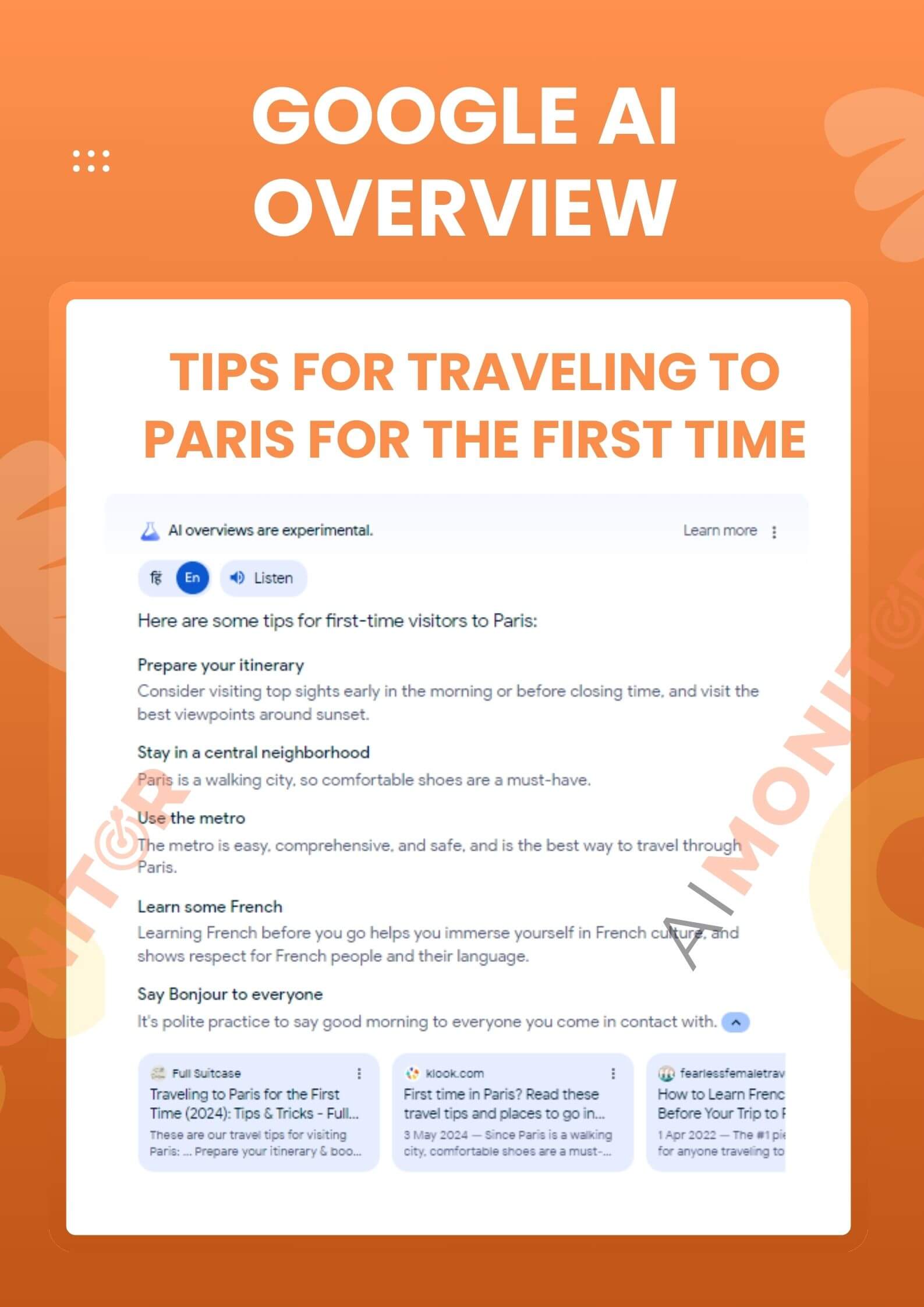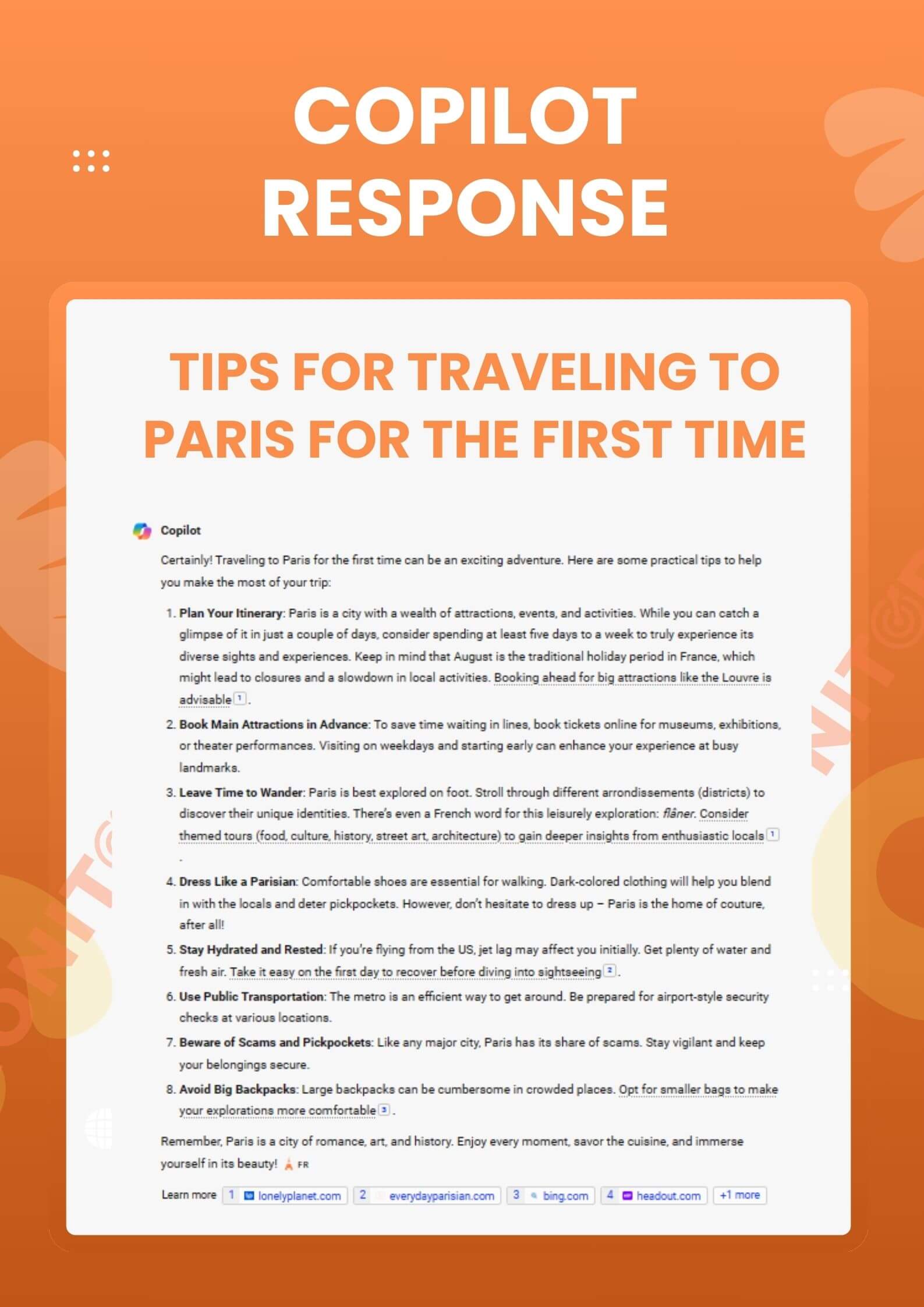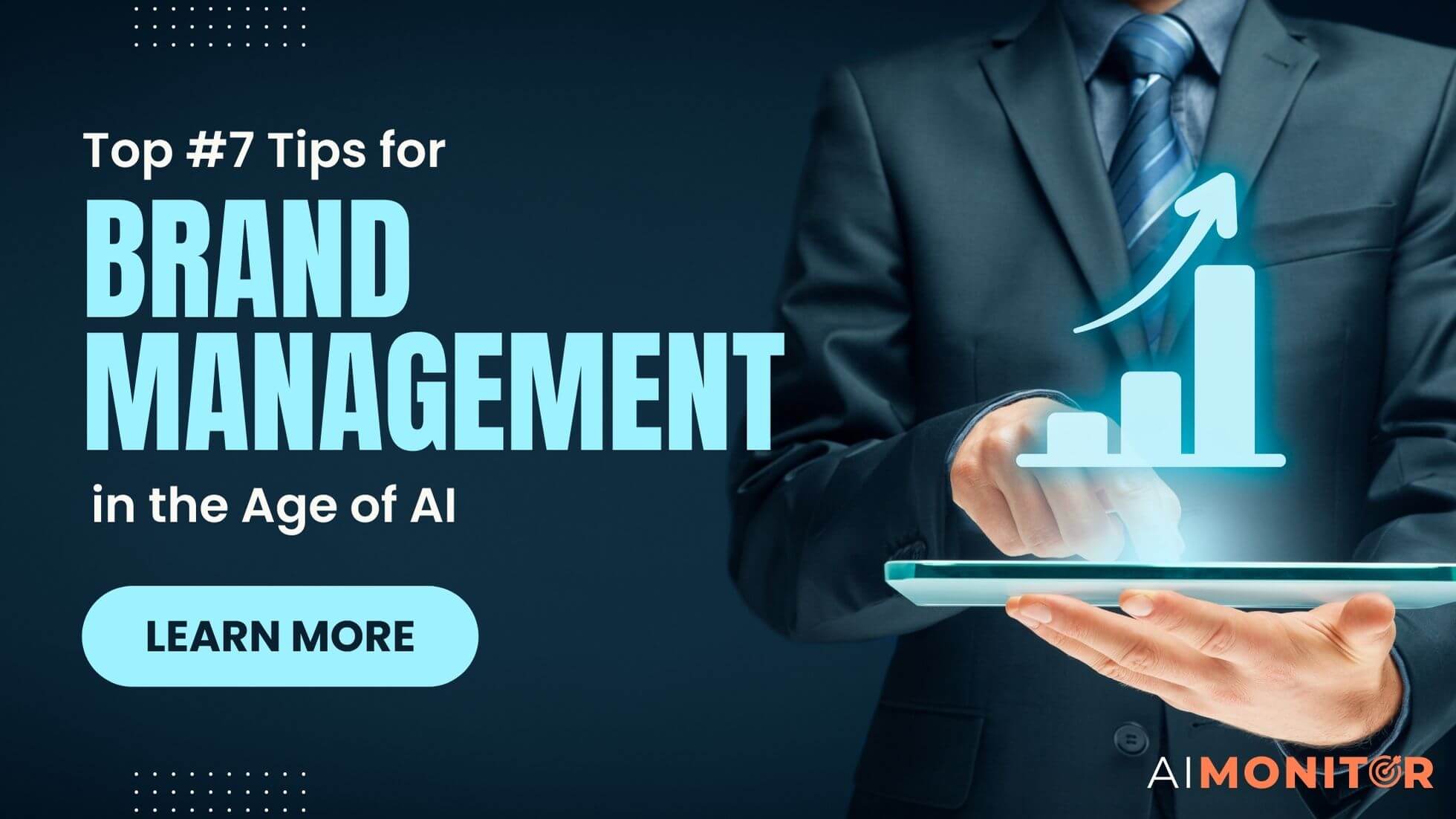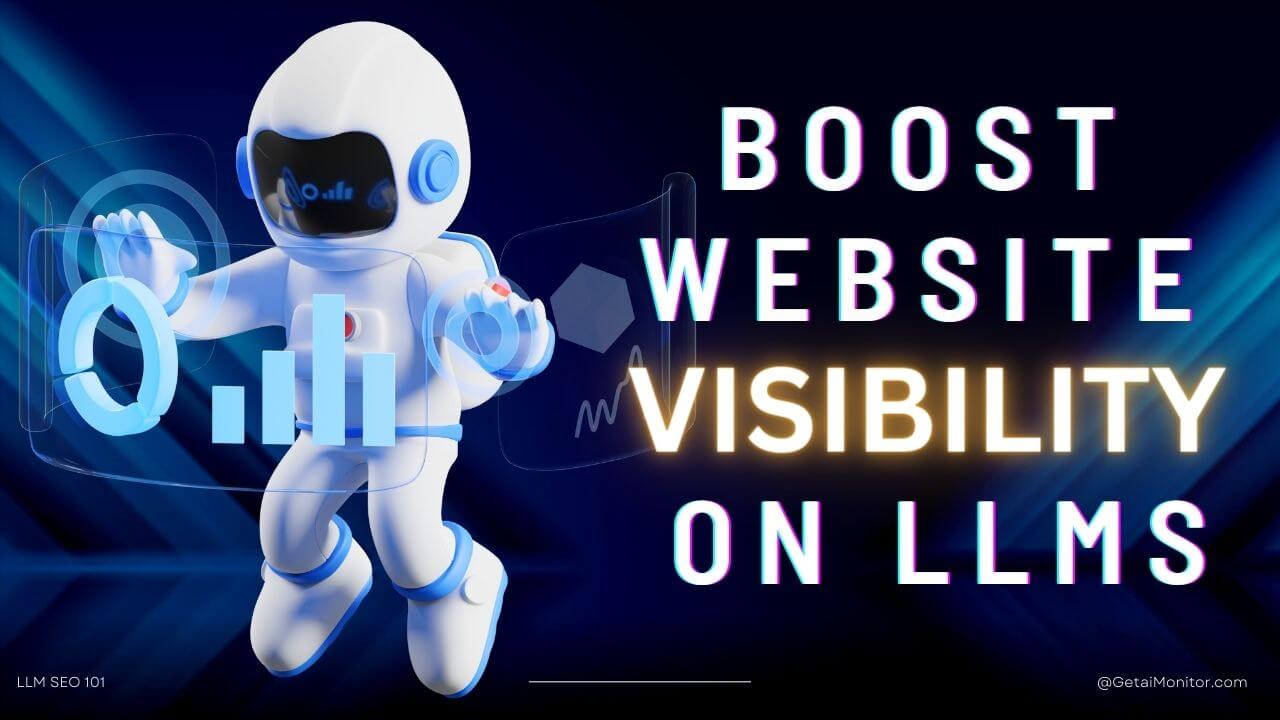- Call us: +1-623-223-7423
Many of us have either prepared SEO reports or received them with search engine ranking (“SERP”) for specific keywords. However, as I have repeatedly discussed with anyone willing to listen, depending on SERP alone to measure content performance is becoming increasingly outdated.
I’m not saying that SERP rankings for specific keywords relevant to your business are entirely meaningless tomorrow or next week. However, it is a fact that Large Language Models (LLMs) have fundamentally changed the way we find and consume information. Thus, SEO, which was once an effective marketing strategy, is going to die the same fate as traditional publishing houses did after the advent of the Internet.
This article dives deeper into this claim and introduces three new criteria for a more comprehensive approach.
Case Study: The Fallacy of Solely Focusing on SERP Ranking
Consider the search query "Tips for traveling to Paris for the first time." Traditionally, an SEO report would show the ranking of various web pages containing this keyword, as can be seen below:

However, with LLMs, search engines like Google now provide AI-powered abstracts directly on the search results page. These abstracts collect information from various sources, making it challenging to identify the exact ranking of each webpage. You can observe this in the image below:

Traditional Reports vs. LLM Summaries: A Comparison
The table below represents the limitations of depending solely on SERP ranking. It compares search engine results with AI summaries for the earlier-mentioned query.
Comparison of Search Engine and Generative Engine Results
Query: Tips for traveling to Paris for the first time
| Rank | Web Sources | Search Engine Ranking | AI Summary Ranking | |
|---|---|---|---|---|
| 1 |
Everyday
Parisian First Time Guide to Paris |
1 | Not listed | |
| 2 |
Travel? Yes Please! https://www.travelyesplease.com/what-to-expect-first-trip-to-paris/ First Trip to Paris: What to Expect |
2 | Not listed | |
| 3 |
Klook First Time in Paris? |
3 | 2 | |
| 4 |
The Hungry Traveler https://www.thehungrytravelerblog.com/paris-for-beginners-tips/ Paris for Beginners: Tips for Stress-Free Travel |
4 | Not listed | |
| 5 |
Full Suitcase https://fullsuitcase.com/tips-visit-paris-first-time/ Traveling to Paris for the First Time (2024): Tips & Tricks |
5 | 1 |
Result
As you can see, the AI summary includes some sources (Klook and Full Suitcase) but not others. This unpredictability makes it challenging to judge content performance based mainly on position in the SERPs.
List of Sources Vs. Inline Citation
To further complicate matters, the AI overview powered by LLMs provides an inline citation in some cases; however, in other cases, the summary only lists the sources at the end.
For example, in the Google AI Overview, relevant sources are usually mentioned at the end of the summary or after each paragraph, as shown in the above image.
On the other hand, Bing Copilot usually provides sources in the form of inline citations. This observation can be noticed in the below image when we ask Copilot the same question we asked Google.

New Benchmarks for Measuring Content Success
Brands and content creators currently don't know how to:
| Question | Search Engine | AI Summary |
|---|---|---|
| Measure visibility or impression of their content? | ✅ | ❌ |
| Improve the visibility of their content? | ✅ | ❌ |
| Determine the semantic connotation of their content? | ✅ | ❌ |
Since SERP ranking alone is no longer enough, me and my co-founder decided to launch AI Monitor. It is the world's first and most popular tool for measuring your brand and content's success on LLM-powered search platforms, such as ChatGPT, Copilot, Google AI Overview, and Perpexility AI, to name a few. AI Monitor enables you to monitor and measure alternative criteria such as:
-
Visibility and Impressions:
AI Monitor can track and measure your brand mentions in AI summaries from various search platforms in response to different user inquiries. It can also track whether various AI search platforms are finding your content relevant and useful for various prompts.
-
Content Engagement:
Are users engaging with your content? Keep an eye on metrics like click-through rates, time spent on a page, and bounce rates to gauge your content's resonance with the audience. Additionally, AI Monitor's "LSE Click Rate (LCR)" score amalgamates key metrics to reflect a website's true exposure within LSE responses.
-
Semantic Understanding:
Is your brand or product being referenced in a positive or negative light in search results? AI Monitor can help you track these sentiments in the LLM-powered summaries.
- The Importance Of Keyword Research In Niche Blogging | Copywriters Board.
- How to Write A Blog That Converts: A Comprehensive Guide.
- Expertise - Scion Advisory.
- The Ultimate Guide to Creating a Detailed Page That Engages and Converts - Butter Milk Hill Restaurant.
- The Importance Of Keyword Research In Niche Blogging | Copywriters Board.
Conclusion: Early Adopters of LLM SEO Will Benefit Massively
Embracing LSO at an early stage can yield a considerable competitive advantage in the swiftly evolving digital terrain. Consequently, optimizing content for LL models can enhance visibility and traffic, given that these models are becoming primary sources of information.
Focusing on these metrics provided by AI Monitor can help you gain a thorough understanding of your content's performance and effectiveness in the age of LLM-powered search. Start your free trial for AI Monitor today!
References
Avinash
I'm a lawyer and foodie who loves tech, and AI 🤖! For the past 10 years, I have been making law & tech play nice with each other 🤝
Frequently Asked Questions
Focusing solely on SERP ranking is becoming outdated because the growth of large language models (LLMs) has changed how search engines present information. AI-powered abstracts collect data from different sources, making it tough to identify the accurate ranking of each webpage. This change makes it less reliable to rely solely on SERP rankings or SEO to measure how well content is performing.
Depending solely on SERP rankings for content performance has multiple disadvantages. It doesn't explain the clarity provided by the AI abstract, the unpredictability of source inclusion, and the difference in citation methods (inline vs. end-of-summary). These factors make it tough to compare content performance exactly through SERP rankings alone.
The guidelines for measuring content success rate include the following:
- AI Monitor can track brand mentions and calculate the clarity and impressions on various search platforms in response to user queries.
- It can observe content involvement through different criteria, such as click-through rates, time spent on a page, and bounce rates, and provide an "LSE Click Rate (LCR)" score to show a website's disclosure within LSE replies.
- AI Monitor can help track opinions (positive or negative) related to a brand or product in search results powered by LLM abstracts.
AI Monitor helps calculate content performances by informing users about brand mentions in AI abstracts, evaluating content involvement through different criteria like click-through rates and time spent on the page, and evaluating the opinion of recommendations in search results. As a result, AI Monitor provides a comparative view of how content performs across different AI-powered search platforms.
Definite understanding is important in content measurement because it evaluates how correctly your content gives information in response to user queries. Tools that evaluate definite richness can help to ensure that your content is not only keyword-rich but also textually suitable. This layout with user intention leads to better involvement and greater satisfaction, making it an essential criterion in evaluating content performance.
Brand visibility is crucial because it shows how often your brand or content appears in LLM-powered AI search summaries despite its ranking in traditional search engines. In today's world, where AI-powered search engines are the common source of information, if your brand isn't visible, it's as if it's covered on the second page of Google results. High visibility shows that your content is available and noticeable, contributing to its overall performance and effectiveness.
Businesses can modify their SEO techniques by focusing on a broader set of performance metrics beyond SERP rankings. This includes:
- Apply tools like AI Monitor to track visibility and impressions in AI-powered search results.
- Evaluating user involvement criteria for LLM results to understand content effectiveness.
- Use semantic analysis for responses generated by LLM-powered search engines to ensure your brands are presented in a positive light.
- Staying modified with AI development and adjusting techniques to maintain relevance.
By adopting these new criteria, businesses can better navigate the evolving search landscape and achieve sustained content success.
Early adopters of LLM SEO will benefit massively because optimizing the content for LLMs can significantly enhance clarity and traffic. Remember how easy traditional SEO was in the early 2000s? As these models become the main sources of information, businesses that adapt early can obtain a competitive advantage by ensuring their content is effectively indexed and shown in AI-driven search results. This proactive approach can lead to increased brand identification, better user engagement, and higher overall content performance.







